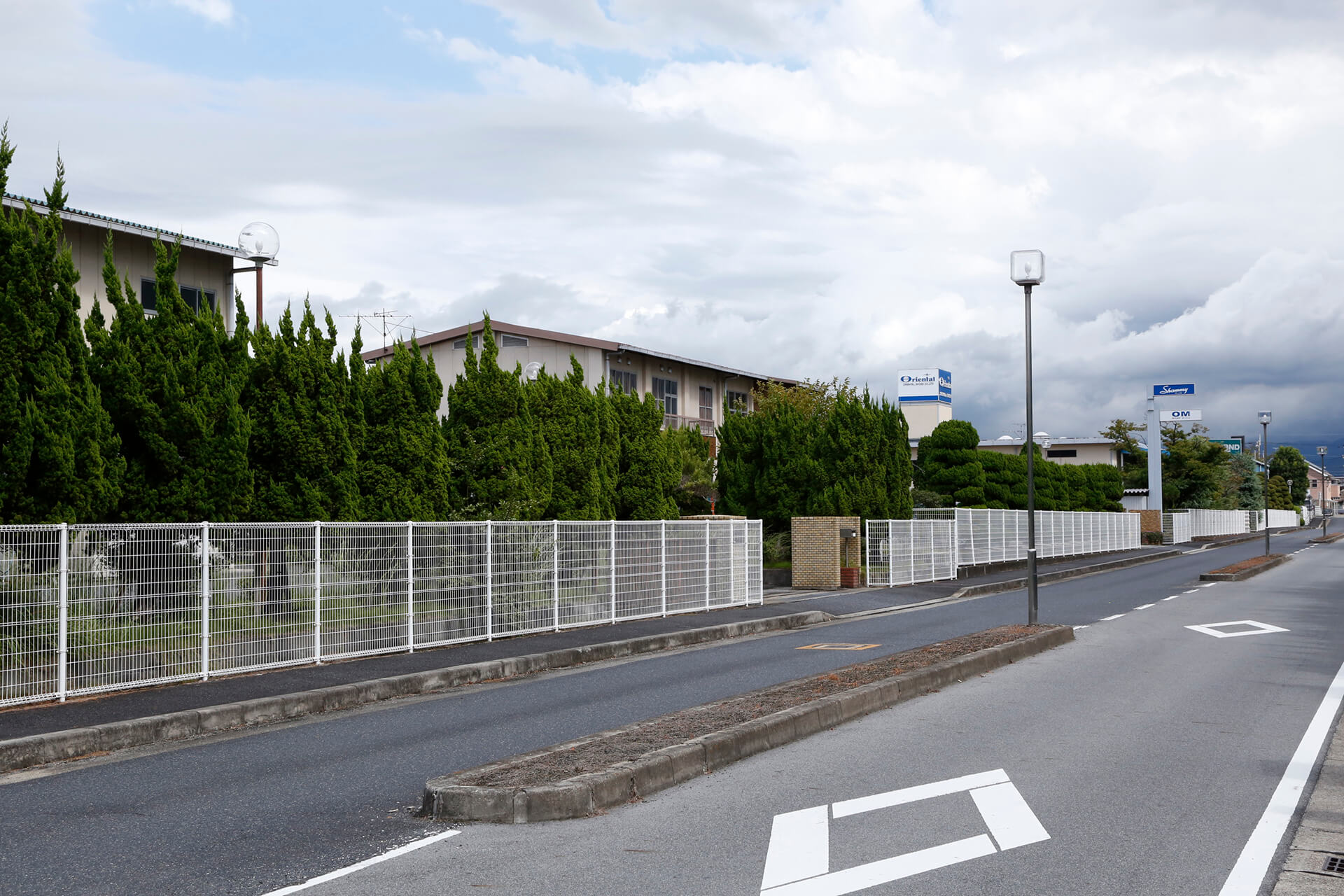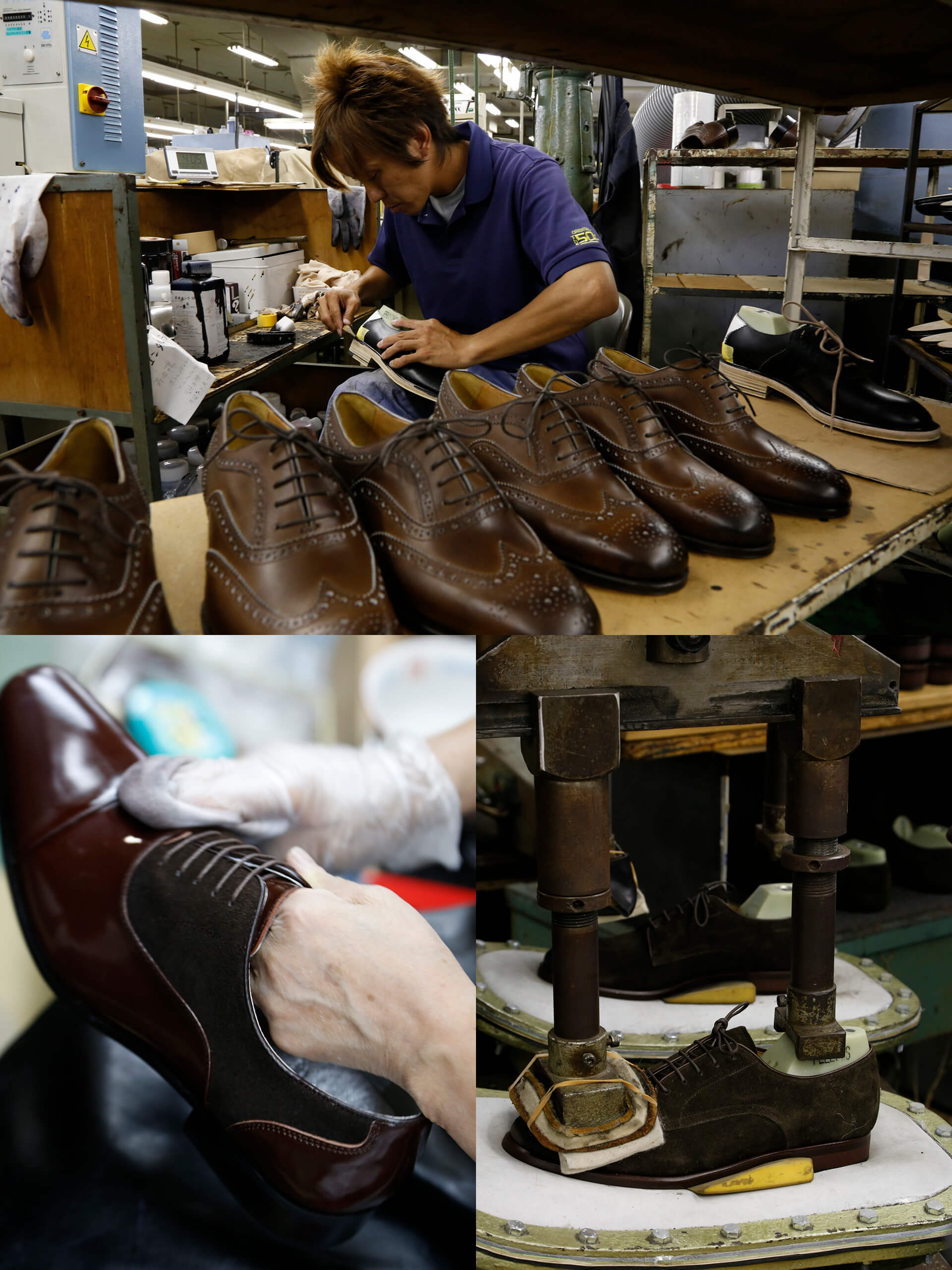
Creative: Nara
Nara Prefecture Shoe Factory Complex:The little known mecca for men's shoes

Yamatokoriyama City is located in the northern part of the Nara Basin. The Nara Prefecture Shoe Factory Complex was completed in 1984 in this area that once prospered as a center of politics and culture.
The history of the industrial park, which is usually a part of city development plans, is old. Trafford Park Estate, which was established in Manchester, England in 1896, is the beginning of this measure, which gathers small and medium-sized enterprises with hopes to have a synergistic effect due to agglomeration. In Japan, in 1934, there was the Sennomachi factory, which was created in Shimomaruko, Ota-ku, which claims to be a "town of manufacturing."
The notable point of the Nara Prefecture Shoe Factory Complex was that is was the first complex dedicated to the shoe industry, and it also became a model case for this kind of advanced business. "The amount of debt was nothing like I'd ever seen. That's why we, the second generation, were against it at first. But now, we couldn’t be more grateful."

The site area of the Nara Prefecture Shoe Factory Complex is 38,383 m². The total project cost amounted to 4,333 million yen. Currently, there are 7 companies and 200 employees, with an annual production of 1.7 million pairs.
Mikio Minamioka, the chairman of the board, continues. "The men's shoe industry in Nara at that time was at the height of its game. Japan only went into full-blown mass production after the Tokyo Olympics in 1964. But our predecessors started machine production even before that. They were ahead of their time and leading in terms of cost competitiveness. "
Then, the companies in the prefecture gathered and completed the complex, which made up for the geographical disadvantage of Nara, where the bullet train does not pass, and created a strong connection within the industry. Tsutomu Matsumoto, Managing Director, says,
"What we can be proud of is a relationship without interests. It was a turbulent post-war era for the manufacturing industry, but thanks to like-minded colleagues, we were able to take a powerful next step."
Mr. Minamioka adds, "The weekly regular meetings held in the union meeting room started by our predecessor are less frequent now, but we still have them. Our monthly cleaning of the surrounding roads has become a regular practice. "
The times have helped move the industrial complex forward. The next move for the second generation was to build an overseas production system. Mr. Minamioka says, "At that time, there were trading companies who could help us, but manufacturers started to embark on their own. Knowing the actual manufacturing process became a priority."
And amazingly, in 1999, they paid off that debt that was ‘nothing like they’d ever seen’.
15 years since they became free of their burden. The Nara Prefecture Shoe Factory Complex has begun to pass the baton to the third generation.
"It goes without saying that the business practices of the past no longer works. The way to survive is to dig up a small but good quality gold mine and keep on digging."
As Mr. Matsumoto sends a wise message to the next generation, Mr. Minamioka once again emphasizes the significance of the complex.
"Even if the convoy system is no longer valid, it is still indispensable as a spiritual pillar. I am really proud of the bond that we have nurtured through this factory complex. Mr. Matsumoto is also the chairman of the All Japan Leather Shoe Industry Cooperative Association. He’s basically the chairman of the shoe industry in Japan... Not only was Mr. Matsumoto acknowledged for all that he’s done, but all that Nara has accomplished. I'm just so proud. "
The manufacturing techniques that the predecessors have built up. And the wisdom of foresight that helped them survive the turbulent times. There are many things that have been handed down in this area through "shoes". How will the next generation of bearers inherit this treasure? Let’s keep an eye on Nara's shoe making.

Osaka sowed the seeds in the shoemaking industry south of Kansai. Its roots are the Leather Factory (founder: Fujita Denzaburo) built in 1876 and the Okura Kumi Leather Factory (founder: Kihachiro Okura) built in 1879. The scene in Nara, which specializes in men's leather shoes, started when craftsmen who studied in Osaka returned home.